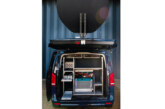
CVW Consulting Editor Sharon Clancy takes a closer look at the Annual Test statistics from DVSA.
Over three-quarters of a million trucks, trailers and PSVs are required to take the annual roadworthiness test. The average first time pass rate is 89%, and while this may seem reassuringly high, DVSA points out that many of the reasons that vehicles fail could and should have been picked up as part of the driver’s daily walk-round check, or before the vehicle or trailer was presented for testing.
Annual test pass/failure rates will have an impact on Operator Compliance Risk Scores, used by DVSA to identify fleets for closer monitoring both at operating centres and for roadside checks.
DVSA now publishes the Annual Test statistics on a quarterly basis: here, we take a look at the whole year for 2018-19.
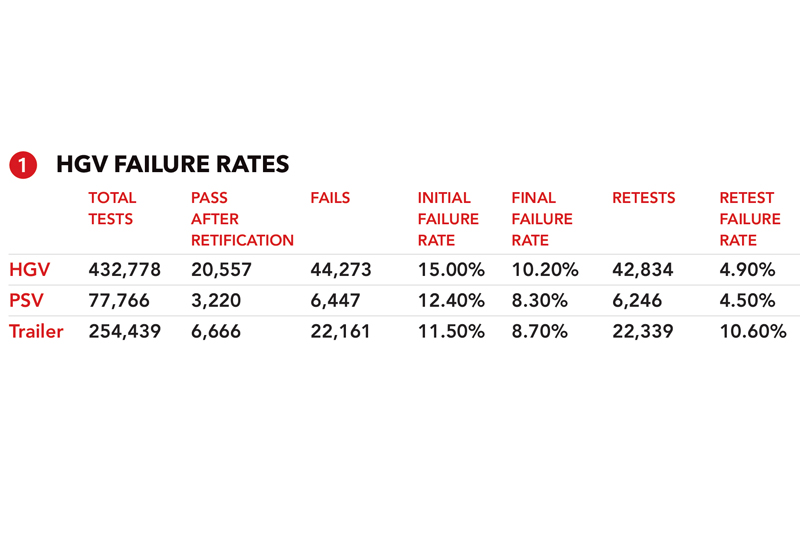
The first glance indicates that some operators may still be using the annual test to identify defects on vehicles and trailers. (Chart 1) For example, the initial failure rate for HGVs was 44,273 (15%), but after retesting, 42,834 trucks were retested, of which only 4.3% failed. The failure rate for trailers fell from 11.5 (6,447) to 8.7%, with a similar story for PSVs; down from 11.5 to 8.7%.
(Charts 2, 3, 4) Half of the top 10 failures are on just two vehicle systems: lights and brakes, which pose a potentially serious danger to other road users. Faulty lamps are responsible for 3.5% of HGV test failures, closely followed by headlamp aim, at 3.4%.
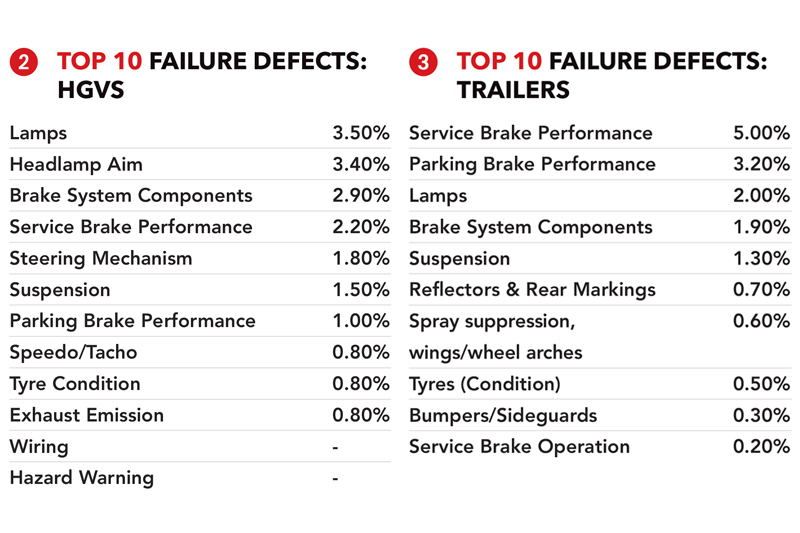
Some 6% of HGVs fail the annual roadworthiness test because of braking system faults. (Chart 2) Brake system components account for 2.9% of failures, service brake performance for 2.2%, and parking brake performance for 1%.
Steering defects account for 1.8%, steering and suspension 1.5%. Tyres and emissions account for 0.8% of failures.
Trailers (Chart 3) are presented in poorer condition, with 5% failing on service brake performance, 3.2% on parking brake, and 1.9% on system components.
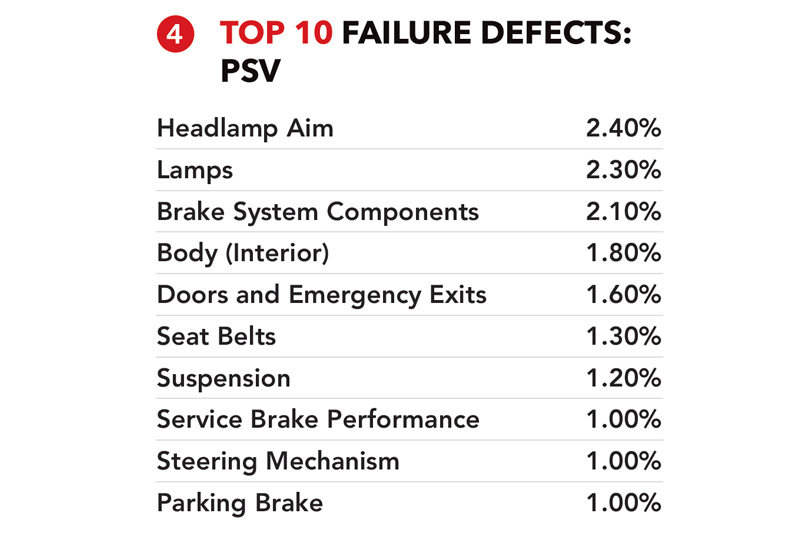
For PSVs, lamps and lights top the defect list, with brake system components third at 2.1% (Chart 4).
Age and fleet size
As you might expect, older vehicles are more likely to fail the test, with failure rates rising significantly once vehicles reach seven years old, and again at 10 years old. For the year 2018-19, HGVs aged 12 years or more had a 31.7% failure rate, trailers 18.8%, and 20.5% for PSVs. Fleet size is also a factor. If you’re running just one vehicle, then the failure rate is 22.7% for HGVs and 28.9% for PSVs, falling to 5.1% and 3.3% for fleets of 101 or more.
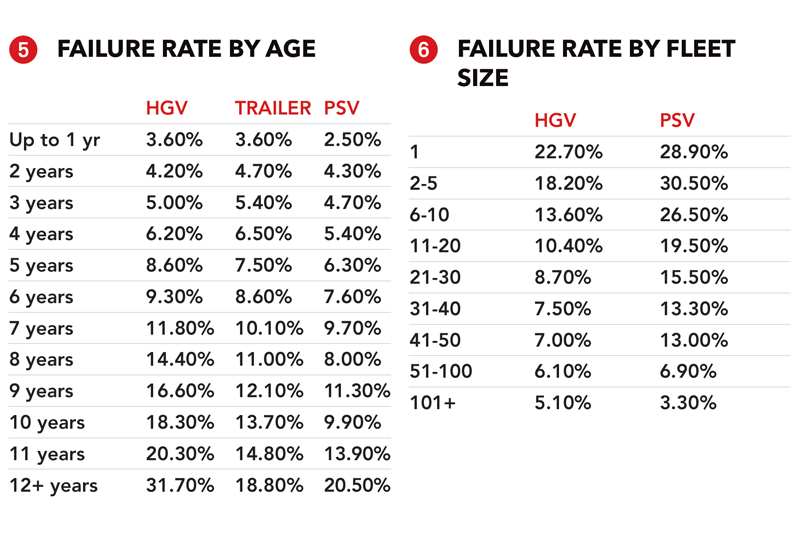
HGV operators of fleets ranging from 11 to 50 vehicles have a much better pass rate than PSV operators, with an average failure rate of just under 8% for HGVs and trailers, compared with 14% for PSVs.
DVSA points out that a daily walkaround check is legally required, and that each fleet must have a designated transport manager, regardless of size.


